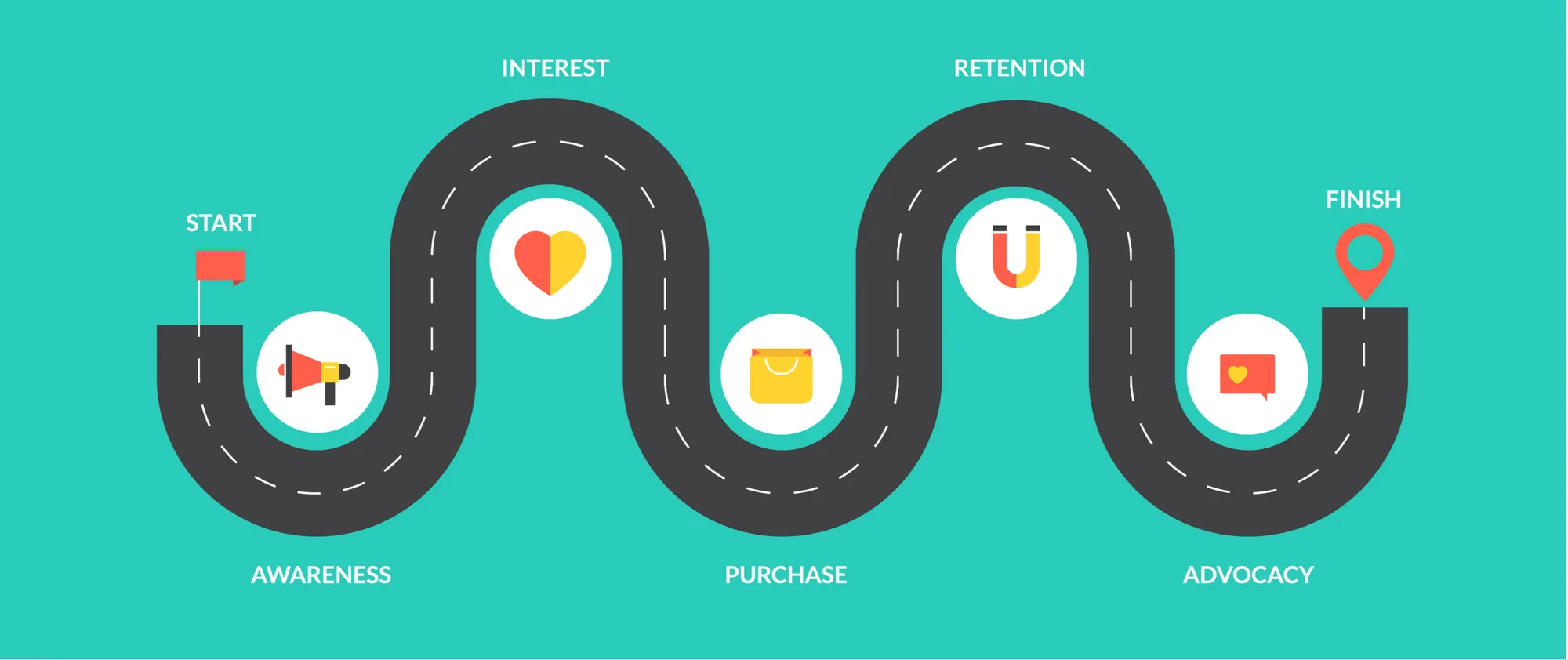Once customers become aware of your product or brand, the eCommerce customer journey begins. How quickly they accelerate through the journey is largely determined by the seamlessness of the customer experience and how much you know about your customer.
According to research from McKinsey, brands that can improve the customer journey see revenues increase as much as 10-15 percent, as well as lowering the cost of customer service by 15-20 percent.
Steps in the customer journey are typically as follows:
- Awareness
- Consideration
- Purchase
- Retention
- Advocacy
A bit of upfront investment and research can pay dividends when it comes to improving the customer journey. Here are three areas to focus on now.
Create a Customer Journey Map
The first step in truly getting to know the customer is to create a journey map to understand how they experience your brand. Journey maps can illuminate where there may be gaps or friction in your eCommerce experience, so your team can make improvements. Other benefits include understanding your customer’s needs at each stage of the buying funnel, and prioritizing internal efforts based on what drives the behaviors you value most.
According to Marketo, an effective journey mapping progress has six typical stages:
- Objective-setting: Know what your team wants to get out of the journey-mapping exercise, whether that’s relaunching your eCommerce experience altogether or making small changes.
- Persona-building: Create personas based on the typical buyer’s pain points and aspirations. Talking to customers and creating profiles is the best way to achieve this goal.
- Identifying touch-points: Document all the places where your customers interact with your brand online (e.g. social media, website, email, etc.)
- Deciding on map type: Figure out whether you’d like to map the current state of your customer journey, a day in the life of the customer, or a desired future state.
- Plotting the journey: Focus on the actions your customers are taking, when, and how.
- Taking the journey yourself: Go through the journey yourself, and see how you would experience your brand as an outsider.
Leverage Personalization
Once you’ve identified how different customer personas experience your brand, it’s time to look at personalizing the customer journey. According to research from Acquia, 80 percent of shoppers expect and reward a personalized customer experience online, and say that they would be more loyal to a brand that understood what they were looking for. However, 60 percent of customers said brands don’t do a good job at using personalization to predict their needs.
The first step in getting the personalization process right is to create segments to divide customers into groups with common characteristics. You can create effective segments by analyzing past data on customer interactions on your digital properties. After your segments have been created, your brand will be in a better position to personalize communications both at the beginning of the buyer journey at the product page, through to the thank you page and follow-up emails.
For example, you may know that a customer has viewed several products in the same category, so you can react by packaging products they’ve previously viewed and offering a personalized discount. This type of real-time response to customers’ needs can increase conversions and drive incremental revenue.
Invest in Extended Warranty Coverage
One simple way you can improve the consideration, purchase, retention and advocacy stages of the journey is by offering extended warranty coverage. If your brand offers extended warranties on items, customers are more likely to feel secure in making big-ticket purchases online. Done right, the extended warranty process should be simple to implement, as well as simple to understand and navigate on the customer’s side.
Solutions like Mulberry make it easy for the customer to add extended warranty coverage to their orders at checkout. Mulberry also makes it simple for customers to file a claim, check their claim’s status, and get a repair or replacement item. This process lowers the burden on customer success teams to service warranty claims, and improves overall customer satisfaction. A satisfied customer is more likely to return for future purchases, and recommend your brand to others.
Ready to Use Warranties to Improve the Customer Journey?
Schedule a Demo





